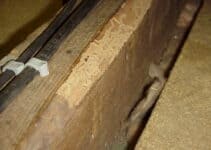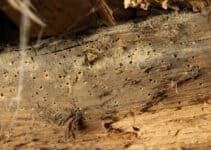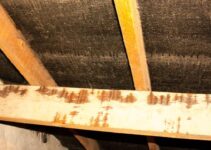If you’ve got a problem with woodworm, you’re not alone. Woodworm can be highly destructive and treatments can be costly.
They can also be invasive and toxic, too. But ignoring the problem and hoping it will go away isn’t an option either.
So what can you do about it?
There are lots of ways you can treat woodworm or prevent infestation. And how you treat woodworm will really come down to how far the woodworm infestation has taken hold in your house.
If your woodworm problem is localised or is only present in items of furniture your options are much wider and more varied. But if your woodworm problem has become a structural issue, you really will need expert advice.
Having said that, if you are determined to avoid the higher costs of professional treatments, you can turn to many household products to kill woodworm and to prevent them returning in some parts of your home. One of those products is bleach.
Let’s look at how bleach can help with your woodworm infestation in a little more detail:
Can Bleach Kill Woodworm?
Yes, the humble household product that you’ll find in any bathroom or kitchen in the country, can also be your friend when it comes to eradicating woodworm.
Of course, like any treatments there are limits, but we’ll consider how far the benefits outweigh the disadvantages.
Will Bleach Kill Woodworm
Bleach’s strength and effectiveness as a disinfectant is down to its active ingredient sodium hypochlorite. This is the element that kills bacteria, fungi and viruses. It also kills grubs and animals and is toxic to humans when taken in large enough doses.
Here is an easy to use sodium hypochlorite I recommend:
The main takeaway here is: it’s going to do the job of killing woodworm larvae and adult beetles on your wood.
Bleach is one of the simplest and easiest woodworm treatments you can undertake and only requires a few basic safety precautions. It may require more personal investment in time but it will still be one of the cheapest methods of treating woodworm-infested timber.
Bear in mind, though, it may not be the safest.
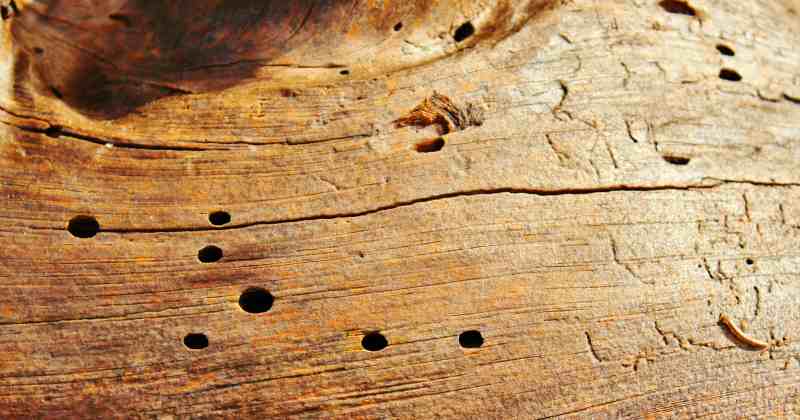
Can You Treat Furniture with Bleach to Kill Woodworm?
One of the limits will be the size and type of the timber you wish to treat. But in terms of furniture infestation, bleach is certainly an option. If you have a smaller items of furniture, you can create a bleach bath for it.
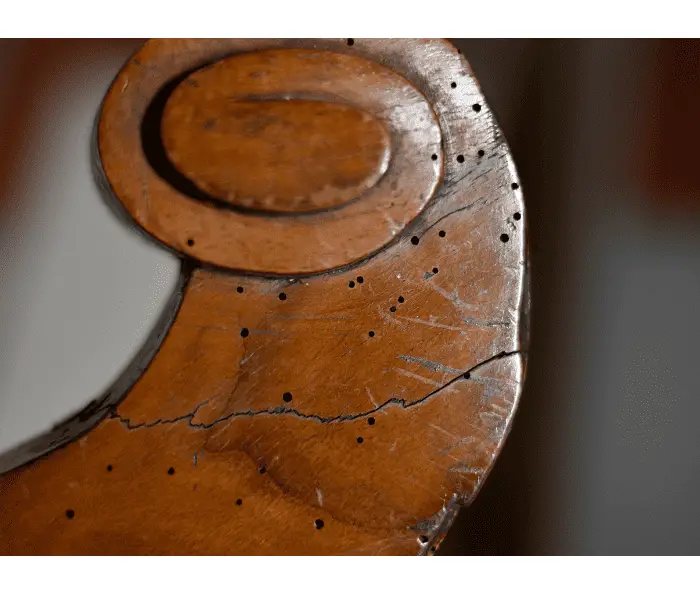
A Bleach Bath for Woodworm-Infested Timber
Here’s how you do it:
- Make sure your space is well ventilated
- Put on some protective gloves, goggles, a mask and protect your clothing
- Dilute your bleach according to the instructions on the packaging of the product you have chosen (the amount may differ according to the brand)
- Place your furniture item into the bath making sure it is submerged fully
- Leave overnight or for 24 hours if possible
- Drain the liquid
- Rinse the wood with clean water
- Refill the bath with clean water (no bleach this time)
- Let the item soak for a few more hours
- Before removing from the bath protect surrounding surfaces
- Allow to dry in a non-humid environment like an airing cupboard
As with any treatment, there are limits and drawbacks to this method.
The timber needs to be unfinished or without varnish or the bleach will likely corrode or stain the surface. Varnish may also stop the bleach from soaking as far into the timber as untreated wood, so may be less effective.
And if the furniture item is larger than your bath it may be impractical, especially if you only have one bath in the house – unless you’re happy to go a few days without bathing!
Larger items can still be given a bleach bath but they may have to be turned every 24 hours to make sure every part of the piece has had the requisite submersion time.
Of course, you may be able to create a bath in a safer environment such as a metal drum or container. This way your bleach bath can be conducted away from most dangers and any noxious fumes will be likewise kept at a distance.
Always make sure, though, that the surface of containers are covered to avoid pets or other animals from accidentally drinking or falling into the bleach.
Spraying Bleach onto Wood To Treat Woodworm
Spraying bleach is really a last resort as it is certainly riskier health-wise. If this method is undertaken, breathing apparatus is recommended as bleach can damage the lungs and raspatory faculties if it’s inhaled.
I like using this bleach which has a more concentrated nozzle:
It’s definitely best to be over-cautious in terms of safety when using this method – use all the personal protective equipment (PPE) and then some. Also, make sure that this is done in well-ventilated spaces and preferably outside.
Some suggestions about how you could employ this method:
- Choose a suitable sprayer – a cleaned garden sprayer or a smaller clean bottle with a spray nozzle will work
- Protect yourself and the area on which your furniture is to be treated
- Spray your diluted bleach onto the item of furniture
- Spray the item every few hours over a 48-hour window to make sure the bleach reaches all its nooks and crevices but also to make sure the bleach solution is absorbed as much as possible
- Rinse off the bleach after this process using clean water.
- You should leave it to dry thoroughly in a dry and warm environment
As you can see, bleach can be used to treat woodworm and it is a cheap way to go about it. But it certainly isn’t the easiest or safest way. It’s time-consuming, messy and potentially dangerous.
If you’re really strapped for cash it is an option but we think it’s better to play it safe and call the experts.
Safety First: Bleach corrodes and can kill. Always use it according to the manufacturer’s guidelines and always wear protective clothing when using it.
Bleach affects the mucus membranes of the airway so it is doubly important to be in a well-ventilated area and to wear a mask.
What Kills Woodworm Naturally?
Woodworm love humidity, so maintaining a humidity level below 50% can inhibit their development. Boric acid, a naturally occurring mineral, is also effective. It can be applied as a dust or mixed with water to form a spray, which penetrates wood and kills woodworms on contact.
Diatomaceous earth, a non-toxic powder made from fossilized aquatic organisms, can be used similarly. It’s sharp on a microscopic level, damaging the insects’ exoskeletons and causing dehydration.
Sunlight is another natural solution; exposing infested items to sunlight can kill larvae and discourage beetles. Freezing smaller items is an option too.
Finally, parasitic wasps, a biological control, prey on woodworm larvae, but this method requires careful implementation to avoid disrupting local ecosystems.
Does Bleach Kill Woodworm?
To conclude, bleach may indeed exterminate surface-level woodworm, but its effectiveness as a long-term solution is limited. Its penetration depth into the wood, where larvae typically live, is insufficient.
While the role of bleach in preventive measures can be active, it fails as a standalone treatment for established infestations.
Thus, the solution for thorough woodworm eradication often involves seeking professional help or utilizing specific woodworm treatment products. This approach guarantees that the structural integrity of your timber beams remains intact, and their longevity is ensured.




